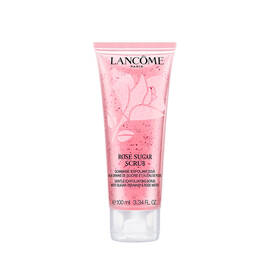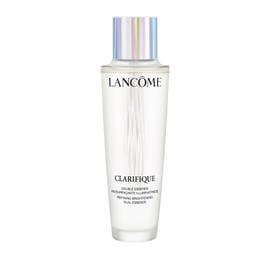How to Exfoliate Your Face for Healthy-Looking, Radiant Skin
Article Published: 4 January 2022
Learn how to exfoliate face and neck properly with chemical exfoliants like salicylic acid and glycolic acid. Shop exfoliating scrubs, BHA exfoliants and more at Lancôme.

Though it may seem optional at first glance, one of the most important steps in any skincare routine is gentle exfoliation. Regularly exfoliating skin, be it with a sugar scrub or salicylic acid cleanser, is one of the best ways to achieve smooth and bright looking skin. And there are different ways to do it, depending on your skincare concerns and goals. Here, learn about what exfoliation accomplishes, what it can do to skin, and how to exfoliate skin to get the best results.
What is exfoliation?
While skin naturally sheds dead skin cells, that process can slow down with age. Those dead skin cells can contribute to the appearance of dry, dull skin, since they’ve been subjected to the most environmental damage. Gentle exfoliation is the process of sloughing away those dead skin cells from skin’s surface, which in turn reveals the new, healthy-looking skin underneath.
How to exfoliate skin
There are two primary methods of exfoliating skin, chemical exfoliation and physical exfoliation. Chemical exfoliation uses chemical compounds like acids, such as alpha hydroxy acids and beta hydroxy acid, or enzymes to dissolve dead skin cells. Not all acids are created equal — glycolic acid, a type of alpha hydroxy acid, can help calm inflammation and serve as an antioxidant , whereas salicylic acid, a beta hydroxy acid best known in acne products, is actually oil-soluble and works to clear out clogged pores.
Then, there’s physical exfoliation, which uses a gritty or abrasive material to rub away dead skin cells. This type of face exfoliator includes exfoliating scrubs, such as sugar scrubs, and facial brushes.
While you can choose whatever method you prefer to exfoliate skin, a few pointers can help. For those with dry skin, sensitive skin or acne-prone skin, a mild chemical exfoliator like a salicylic acid cleanser gently refines skin texture to soften and smooth with minimal irritation. (Exfoliating scrubs could be too irritating for these skin types, and it can be tough to control the level of intensity when you’re manually rubbing it into skin.)
If you have oily skin, consider an exfoliator, such as a glycolic acid toner or a sugar scrub. Both chemical exfoliants and exfoliating scrubs are a good bet to smooth and brighten skin’s appearance. If your skin’s looking a little dull, try Exfoliating Rose Sugar Scrub, an exfoliating scrub, gently removes impurities and dead skin cells from skin’s surface.
Clarifique Face Essence is suitable for a variety of skin concerns including uneven skin texture, uneven skin tone, and large pores. The formula both exfoliates & nourishes the skin. This facial essence with glycolic acid and salicylic acid as well as grapeseed oil, beech bud and vitamin Cg helps to visibly improve both skin texture and skin tone.
When should you exfoliate skin?
You should exfoliate your face after cleansing and before applying face serum and moisturizing. Daily exfoliation is recommended, so long as your exfoliation method of choice is gentle.
In general, though, the more aggressive your exfoliation, the less often you should do it — so, two or three times a week may be enough for a powerful exfoliating scrub, while you can use a gentle face essence like Clarifique Face Essence both day and night. If your skin ever looks red or feels tight or uncomfortable, take a break from using your face exfoliator until it returns to normal.
Once you begin incorporating gentle exfoliation into your skincare routine — and learn how to exfoliate skin properly — the brighter, smoother results may just make the extra step worth it.



